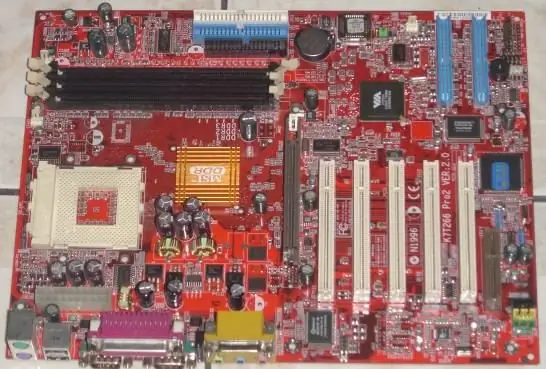Computers have become an integral part of modern life. It is a workplace, a means of communication, and the best rest for many millions of citizens of the 21st century. The more terrible is the situation that the disadvantaged owner of this high-tech achievement describes with a capacious phrase: "My computer is dead!" Fortunately, the situation is not always so fatal. Sometimes it is enough to replace the defective part to restore the computer to work. How to determine if a computer is malfunctioning?

It is necessary
- - a computer;
- - crosshead screwdriver.
Instructions
Step 1
You turn on the computer, but the Power indicator on the front panel of the system unit does not light up, one short beep is not heard, the fans on the power supply unit and on the processor do not spin up. This whole sad picture is evidence of power supply problems. Check if the outlet has power. If the computer is plugged into a power outlet through a pilot, make sure the pilot is turned on. If everything is in order, unplug the power cord from the outlet and from the power supply, then plug it back in and try turning on the computer again. If nothing has changed, disconnect the system unit from the power supply, remove its side panel, disconnect the power supply from the motherboard and bridge the green and black contacts with a 1kΩ resistor. If the power supply does not start, then the problem is with it.
Step 2
If the power supply is working, disconnect all devices from the motherboard except the processor. Plug in the power adapter and start up your computer. If the power supply turns on and the cooler on the processor spins, then the problem is in one of those devices that you turned off. Connect them one at a time, starting with the memory sticks, and watch when the computer stops turning on again - thus, you will find the faulty device. It is possible, however, that everything will work - no wonder, as you know, electronics is the science of contacts.
If the computer does not start when the devices are disconnected, remove the screws that secure the motherboard to the case and remove it. Place the board on the table, plug it into the power supply, and try starting again. If the power supply is started, it is possible that a short circuit occurs between the case of the system unit and the motherboard in some place, or there is a microcrack on the board, which manifests itself when the board is pulled together with screws.
Step 3
If when you turn on the computer, the lights come on and the fans spin, but the system does not boot and the system unit does not beep, check the BIOS battery. If the voltage is less than 3V, it is better to replace it.
Reset BIOS settings by using a screwdriver to bridge the contacts where the battery is. Inspect the capacitors on the motherboard - there should be no swollen or leaking capacitors among them. Re-plug the power connector on the board.
Step 4
If, when switching on, not one short "beep" was heard from the speaker, but long and / or short beeps, then some device is faulty. Each manufacturer has assigned its own audible alarm for its equipment. If you do not have tables that decipher the meaning of "beeps", try to take action yourself. Unplug the computer from power, remove the side panel, remove the memory sticks and wipe their contacts with a regular school eraser. Do the same with the video card. Insert the equipment into the slots firmly, until it stops. If you have several memory sticks, insert them one by one - one of them may be faulty.
Step 5
If the computer turns on normally and you hear the correct short beep from the speaker, but there is no image on the monitor, turn off the computer and tuck in the interface cable. If it does not help, the interface cable may be defective - replace it.






